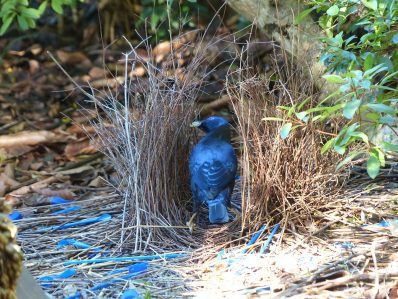Coordinating conjunctions: bowerbird
The Grammar Bit!
Read the three sentences opposite. They each contain a coordinating conjunction. This is a gluey word that can be used to connect words, phrases and clauses.
Notice how in each sentence, the coordinating conjunction (bold) has been used to link two related main clauses. This creates a special type of sentence called a compound sentence. Remember – a main clause (sometimes called an independent clause) contains a subject and a verb and expresses a complete thought.
There are seven coordinating conjunctions: for, and, nor, but, or, yet, and so (FANBOYS is a useful mnemonic to remember them).
Note: There isn’t a definitive rule for the placement of a comma before the coordinating conjunction. Unless the second main clause is very long or begins with the conjunction ‘but’, they are not generally needed.
Scintillating Sentences
- The great bowerbird spent a decade constructing his bower, but he still wasn’t satisfied with its appearance.
- The bower was decorated with colourful objects so it attracted the attention of passing females.
- The scarlet heart was placed at the bower’s entrance and it immediately caught the attention of a curious female.

With no visiting females, it was a really blue day for the lonely bowerbird!

